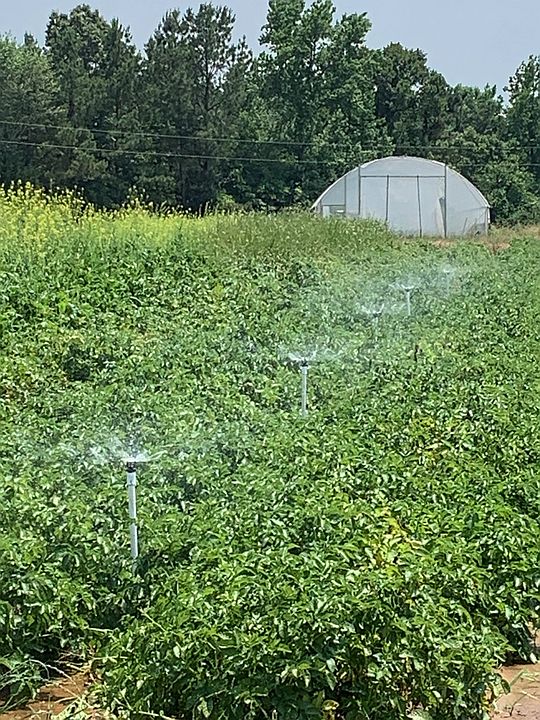Welcome to the Summer Share! Thank you to all our CSA members for joining us this season. We look forward to sharing the harvest with you for the next few months.
Small Shares
- Carrots
- French Fingerling Potato
- Beets
- Zucchini
- Yellow Squash
- Cucumber
Full Shares
- Carrots
- French Fingerling Potato
- Beets
- Zucchini
- Yellow Squash
- Cucumber
- Collards
I was talking to another farmer on Saturday who has been particularly hard hit by all the spring rains. I asked if his farm had finally dried out. “Yes,” he replied, then added with a wry smile, “but now I’m going to complain that it’s too dry.” Seems like we farmers are always complaining about the weather. But my friend is right, it is too dry. Dust clouds follow our tires and our feet. We farm in loess, which is a type of soil formed in deposits of wind-blown silt. The wind brought it here, and it seems all to ready ride on the air again. It gets everywhere. You can taste the soil when you breathe.
We use two different types of irrigation on the farm. Even though we live in a climate that sees abundant rainfall, that rainfall is highly seasonal. Digging an irrigation well was one of the first things we did when we started our farm. It was our single biggest start-up expense. It is a necessity. Our summer crops, those that we have been planting since mid-April, are all planted in beds that have drip irrigation buried an inch or two below the surface. Beds are grouped into irrigation zones, so that we can water five beds of tomatoes at once, for instance.
The spring garden – those crops that get planted in February and March – do not have drip irrigation lines in place. Much of the spring garden is finished for the year, but we still have cabbages, carrots, beets, onions and potatoes out in the field. These crops are watered with overhead irrigation. Picture a 100 foot hose where every 20 feet there is a sprinkler on a pipe 18 inches from the ground. It works pretty well, but only waters four beds at a time and there is a lot of dragging hoses here and there and everywhere. It doesn’t help that in many places, the weeds are taller than the sprinklers. It also does not help that the beds that are still producing are peppered here and there throughout the garden. Mental note for next year, make sure all the beds that will still be producing in June get planted in the same area! (It’s harder than you might think. We tend to march through the field planting chronologically, not jumping around based on projected harvest dates)
In ground irrigation is vastly superior to overhead watering. It delivers water directly to the soil where plants roots are growing. No water is lost to evaporation or blown one way or another by the wind. It does not wet the leaves like overhead watering. Vegetables do not like having wet leaves. Or rather, plants diseases really like it when vegetables have wet leaves. From a practical perspective, all I have to do to start watering is open a valve. No hoses to drag and sprinklers to set up. If it’s so much better, why don’t we use in-ground drip irrigation for all our crops? It is usually wet enough in the spring that these crops only need to be irrigated once or twice. It is not worth the resources it takes to install the drip irrigation for just a couple of uses. Usually.
The benefit of the dry weather is that we have been getting more beds made and more planting done. We planted the sweet potato slips last week. And the third and final round of cucumbers and squash. Beds are ready and waiting for my woefully overgrown tomatoes and peppers in the greenhouse. We have space now to seed the second planting of cantaloupe. I am hoping that most all the planting will be done soon and maybe things will slow down a bit. I should really know better.




You must be logged in to post a comment.